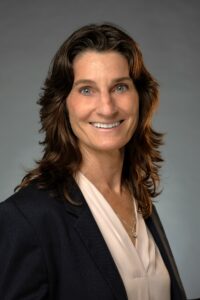

Kristen Brown, OD, FAAO, Dipl AAO, has her roots firmly in the co-management space. Before she served as associate dean of clinical affairs at the New England College of Optometry and founded the NECO Dry Eye Service, she spent 25 years as a clinic director in the refractive and cataract co-management field. “The concept of co-management has always been an important focus of my career. Collaboration between eye doctors is where my career began, starting with residency and fellowship, and where I’m currently headed,” she says.
Now Dr. Brown is taking a step away from academia and the refractive/cataract field to bring co-management to the dry eye space. She is COO and Business Partner with Eyewell co-founders Amy Nau, OD, FAAO, Dipl AAO and Andrew McLeod, MS, OD, FAAO who now own Forefront Eye Care (formerly Korb & Associates). Eyewell represents a new model of dry eye care whose mission is to deliver advanced dry eye management with greater efficiency for both patients and practitioners.
AN IDEA IS BORN
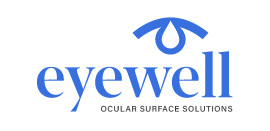

Dealing with dry eye disease is costly to patients and employers due to reduced quality of life, health care costs, time off from work and lost productivity. There is a cost to eye care professionals (ECPs) as well. Many do not have the time or the resources to invest in expensive technology to treat this condition. “There is a market for co-management in dry eye. Many optometrists and ophthalmologists do not have the time or physical space to carve out a comprehensive dry eye service in their practice. Eyewell was designed to serve as an extension of those practices to help doctors care for their dry eye patients, beyond the traditional therapies they currently offer,” Dr. Brown says.
An ECP may feel comfortable treating dry eye patients with over-the-counter and prescription medications but may not want to, or cannot, invest in expensive technology, which can be hard to justify without a sufficient volume of dry eye patients. There are many strategies available to manage ocular surface disease (OSD), which is a chronic, progressive and multifactorial condition.
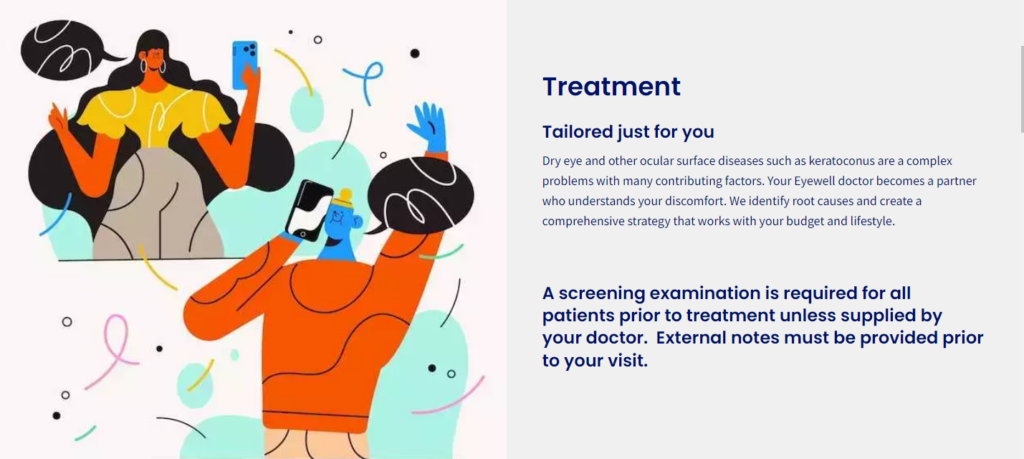

A SURPLUS OF PATIENTS
When all of the contributors to OSD are not adequately addressed, the patient will often seek relief and more advanced care elsewhere. That can leave both the patient and their doctor frustrated. A co-management partnership can be helpful. “In our model, Eyewell serves as a resource–an extension of the doctor’s dry eye practice without needing to invest in the costly infrastructure associated with a comprehensive dry eye clinic. Eyewell works collaboratively with doctors, helping to fill in the gaps while sending the patient back to their doctor for medical follow ups and ongoing management,” she says. Eyewell does not sell glasses or treat other kinds of ocular conditions.
One thing she’s certain of: there are plenty of patients with OSD and emerging dry eye disease. “There are many environmental and behavioral factors that contribute to OSD, typically over a period of decades including contact lens wear, screen time and partial blinking, particularly in our younger patients. “The incidence and prevalence of dry eye will continue to rise as long as we continue to stare at screens,” she says. “It may be a slow-moving train but it’s a train that isn’t stopping.” Given the intermittent nature of symptoms in early disease, many patients don’t realize they have dry eyes until the ocular surface becomes inflamed.
A UNIQUE SPACE
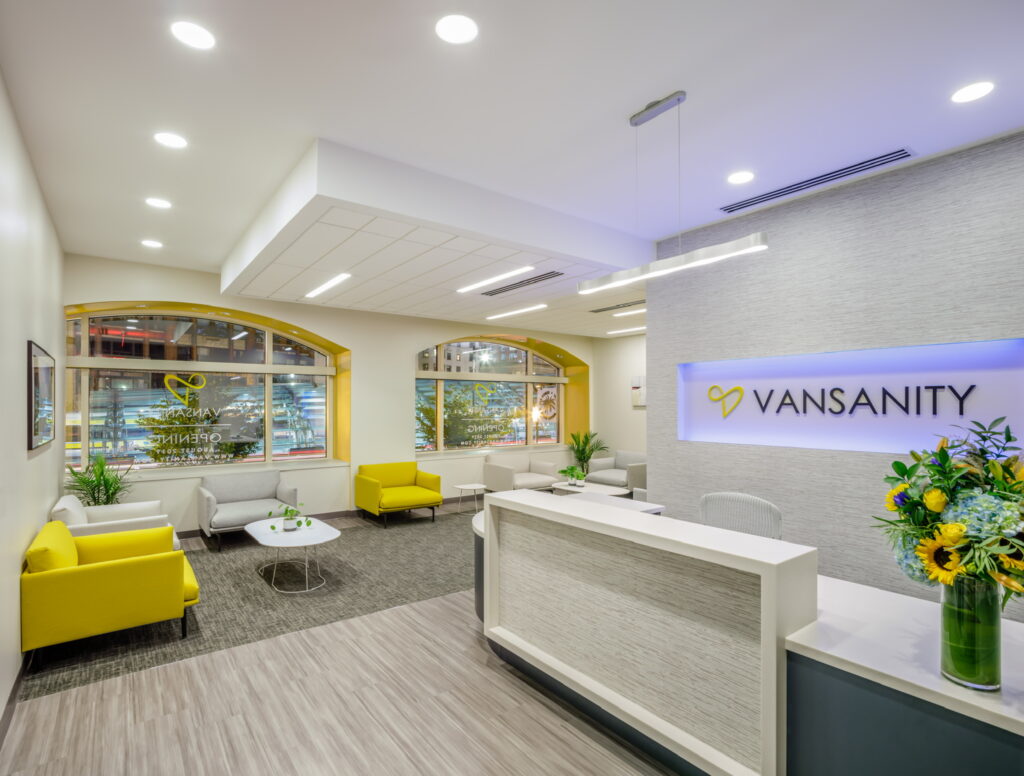

To reinforce the idea that this is a specialty clinic focused on ocular surface disease, Eyewell uses a wellness space inside the Vansanity Clinic in Boston’s Kenmore Square. A diverse group of providers offer specialized wellness and aesthetics services here. “We want to be a resource for dry eye care and meet our colleagues where they are. If investing in the infrastructure and capital outlays needed for a comprehensive dry eye practice do not fit a doctor’s current business model, we can help with diagnostic testing and treatment of their dry eye patients then send them back for ongoing care.”
Doctors refer patients to Eyewell for a specifically-designed suite of evaluations and therapies including a baseline dry eye evaluation, extensive dry eye evaluation, diagnostic testing (e.g. meibomian gland imaging, tear film analysis, corneal sensitivity, etc.) and or treatments such as thermal expression, intense pulsed light and more. The Eyewell team communicates the results of diagnostic testing and evaluations to the primary ECP to support their treatment choices. “Eyewell does not compete with eye doctors who have invested in dry eye technology. We want to support those providers to use what they have most effectively, and to offer additional options where they may have a gap” she says.
It can be challenging for practices that have other priorities—as so many do. Some doctors have a passion for myopia management, vision therapy or low vision that require dedication and focus of time, energy and resources. Dry eye care is a growing area of specialty. That’s where Dr. Brown and her business partners saw the need to carve out this area of co-management and the opportunity to partner with colleagues in support of their patients.
SPECIALTY CARE ONLY
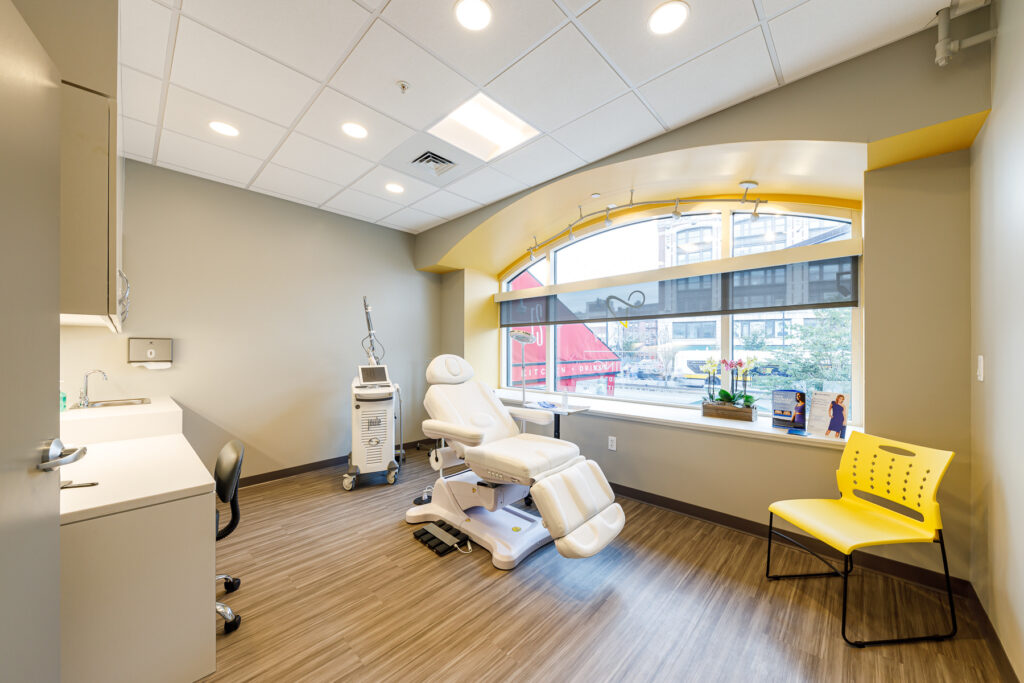

“We are not seeing patients for primary eye care. If they come to us for dry eye evaluations and treatment, we determine who their regular eye doctor is and ensure that we communicate and collaborate with that doctor. If the patient does not have a regular eye doctor, we will refer that patient out to one of our co-managing partners who can see that patient for follow up visits, comprehensive eye care, eyeglasses and contact lenses.”
Eyewell opened in April, and referrals are coming in. “We partner with ODs and MDs who can request precisely how much or how little they want Eyewell to do for any given patient—from diagnostic testing alone to extensive dry eye treatment. For some, the specific goal may be to optimize the patient’s ocular surface before LASIK or cataract surgery.”
Dr. Brown says a good co-management model is built on that basis. “We have complete respect for the doctors and organizations we work with. As part of this partnership, we take excellent care of their patients while they are in our chair, but the relationship with the referring doctor is a top priority.” Ultimately, the Eyewell model of co-management for ocular surface disease is good for both patients and their doctors.
Read other WO stories on dry eye here and here.



